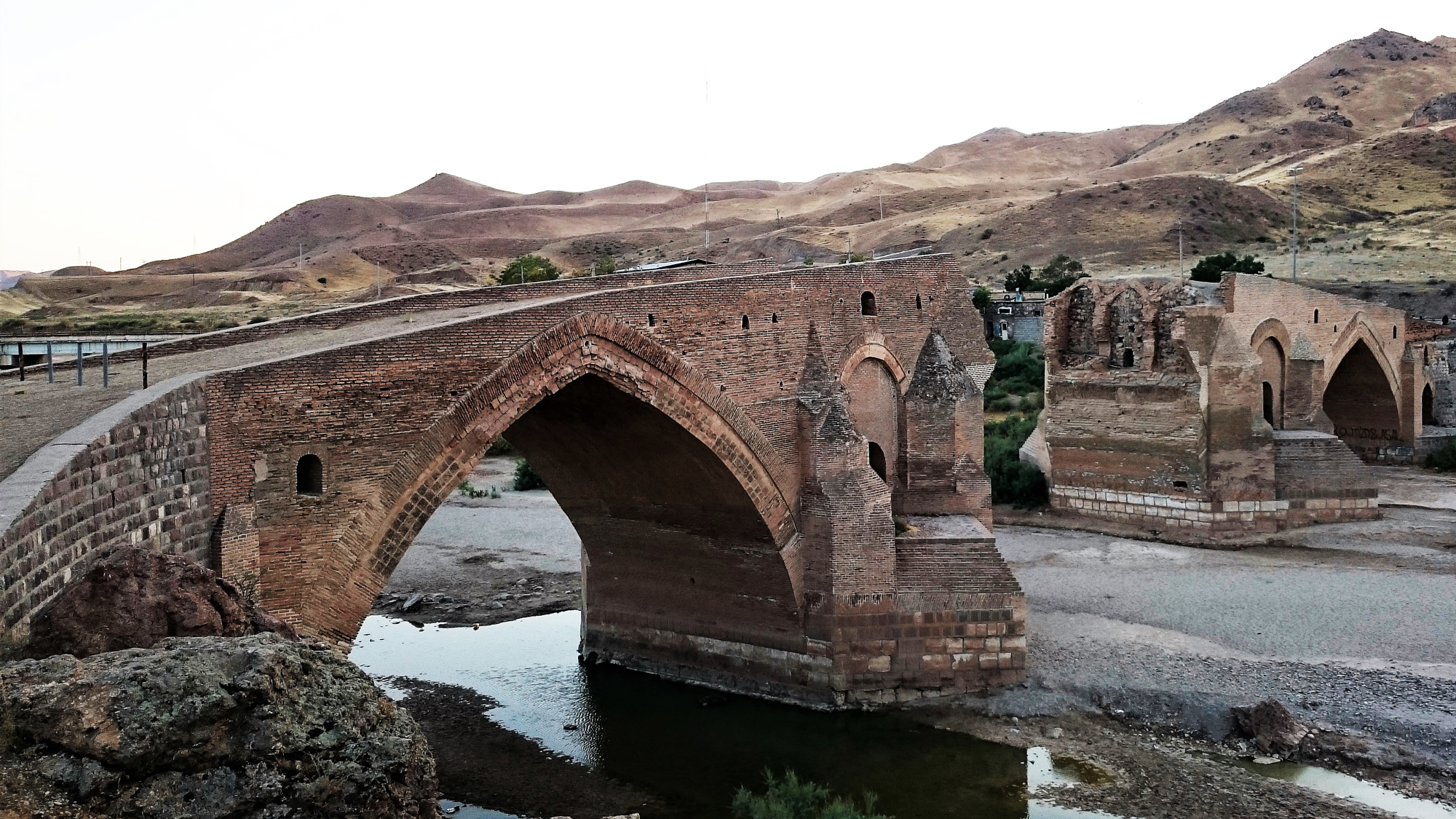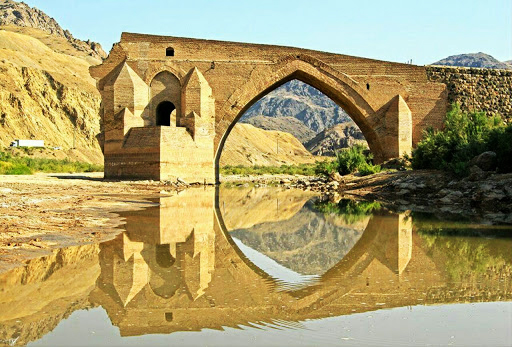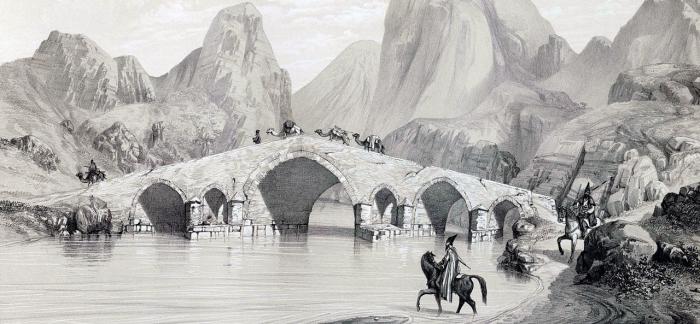Pol-e Dokhtar
Pol-e Dokhtar was built in the southeast of Miyaneh, the city in East Azerbaijan when it was one of the Silk Road routes. However, archaeologists have not yet been able to obtain accurate information about the history of the bridge, but some scholars date the foundations of the bridge to the Sassanid period and some to its architecture to the eighth century. On the other hand, the demolition of the bridge about 75 years ago marked another historic event for it, which can also be considered a “scene”, in a situation where the Democratic forces were retreating from the Miyaneh and with the explosion of the bridge’s arch, blocked the way for the Pahlavi’s army to advance, in order to save themselves.
Construction of Pol-e Dokhtar
It is said; Anahita, a cosmological figure venerated as the divinity of “the Waters” and hence associated with fertility, healing and wisdom had designated the word “Dokhtar” as a safeguard to all the bridges all over Iran to protect the people of the cities from the flood disaster. Dokhtar (daughter) makes angels protect the bridge as more as possible. Qız Körpüsü, Pol-e Dokhtar or Kiz Bridge is one that bridges near Mianeh in East Azarbaijan Province on the river Kizil-Uzun. Some archaeologists date it to the Sassanid era while others attribute it to being the 8th century AD Muslim era construct. The bridge is constructed of three arches with the center arch narrower than the respective side arches.
The Bridge dates back to the Timurid period and thanks to the inscription from the foundation it is known that it was built between 1475 and 1484. The Timurid style is manifested in pyramidally shaped supports with an octagonal base, which is the typology of numerous buildings of that period. Due to the connection of the northern parts of Iran, the bridge had an exceptional historical strategic importance, as evidenced by the fortress of Dokhtar Castle from the Safavid period, which was built only to protect the bridge.
The total length of the bridge is about 120 m, height over the river 20 m, width 10 m, and the span of the three-pointed arches ranges up to approximately 25 m. Pol-e Dokhtar is specific for its proportionally lower arches compared to earlier Islamic periods, a trend that will continue through the Safavid and early Qajar periods.
The central part of the bridge was demolished on December 11, 1946, during the fights of the Iranian army against the pro-Soviet rebels. Road 26 and the Tehran-Tabriz railway were built in the immediate vicinity of the remains of the bridge in the 20th century. In January 1932, Pol-e Dohtar was included in the Iranian Cultural Heritage Register under No. 87.





